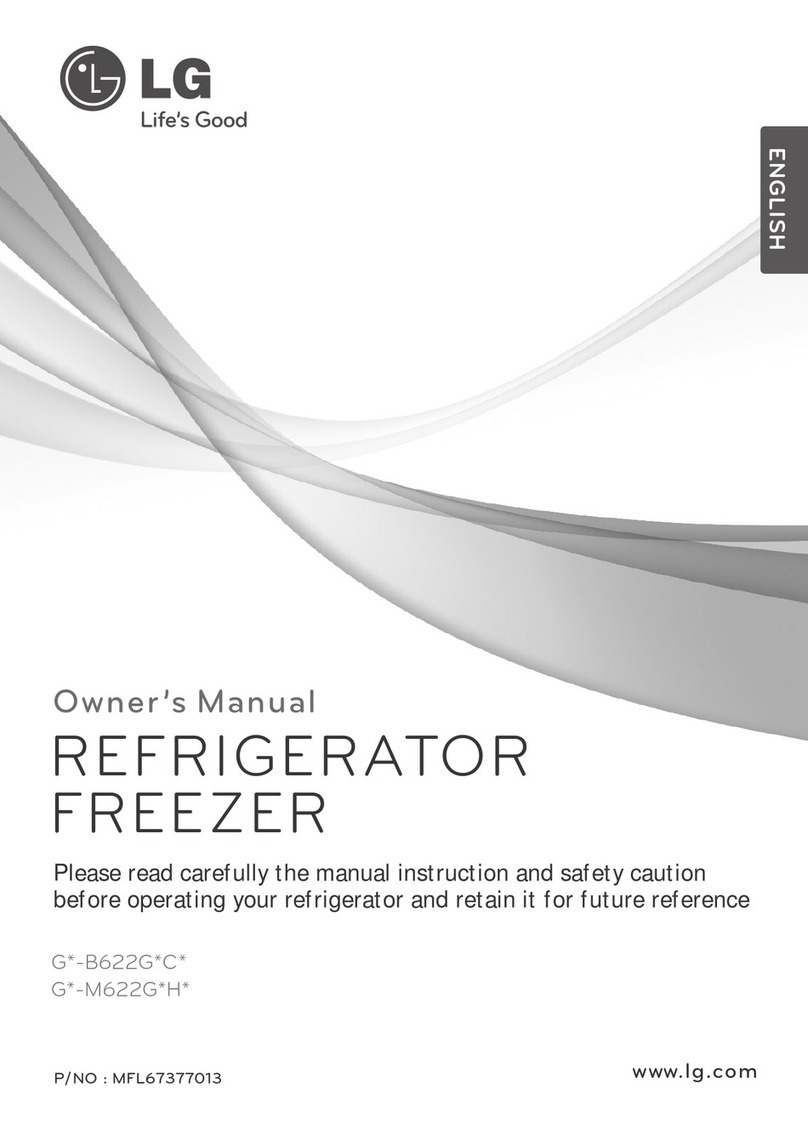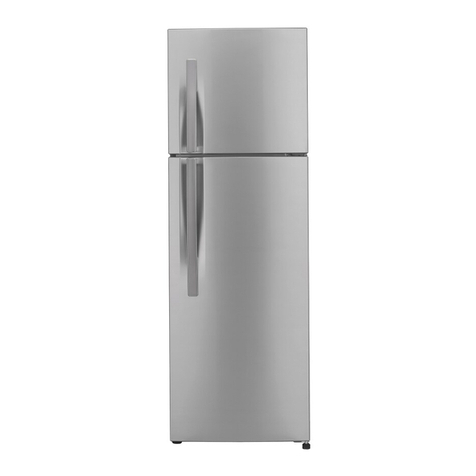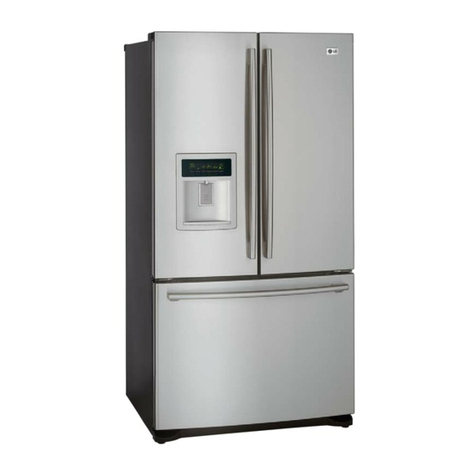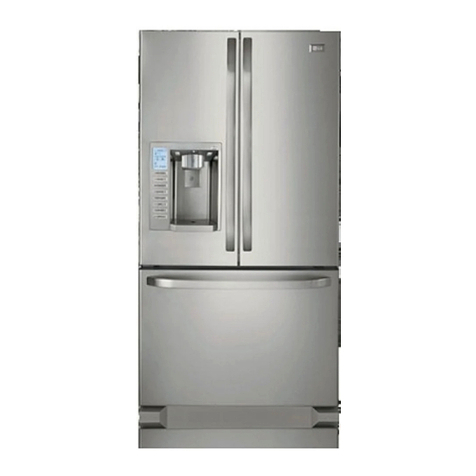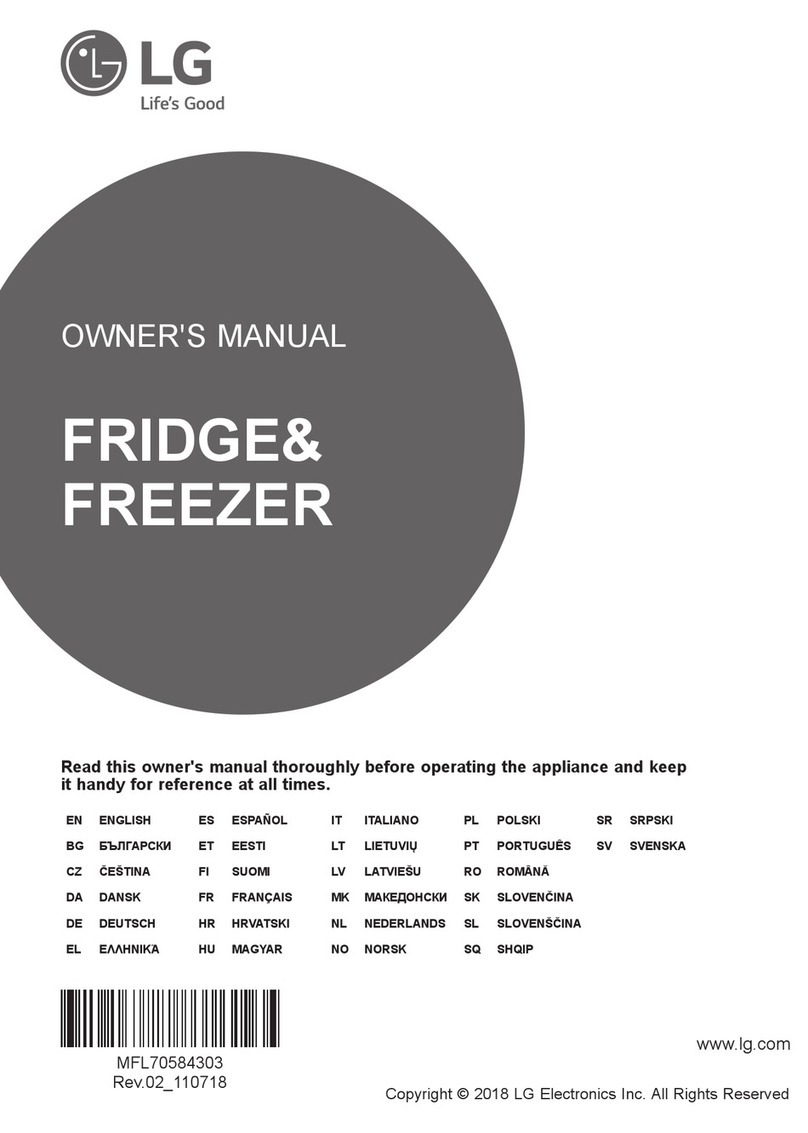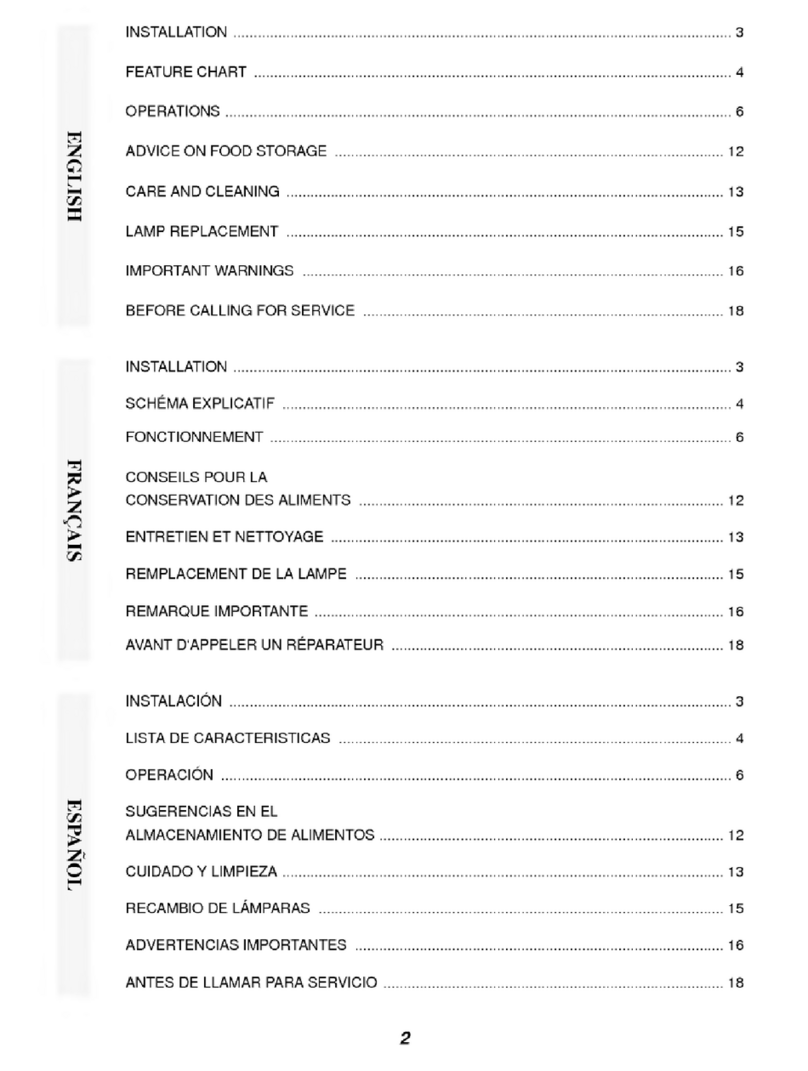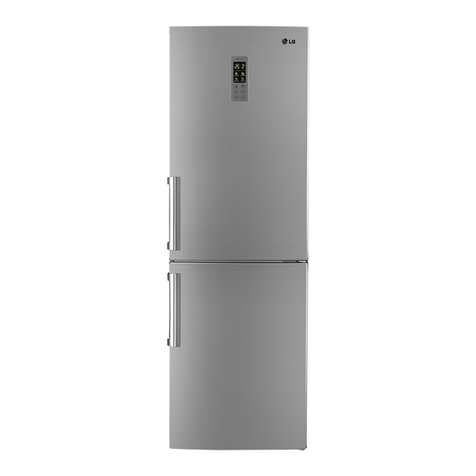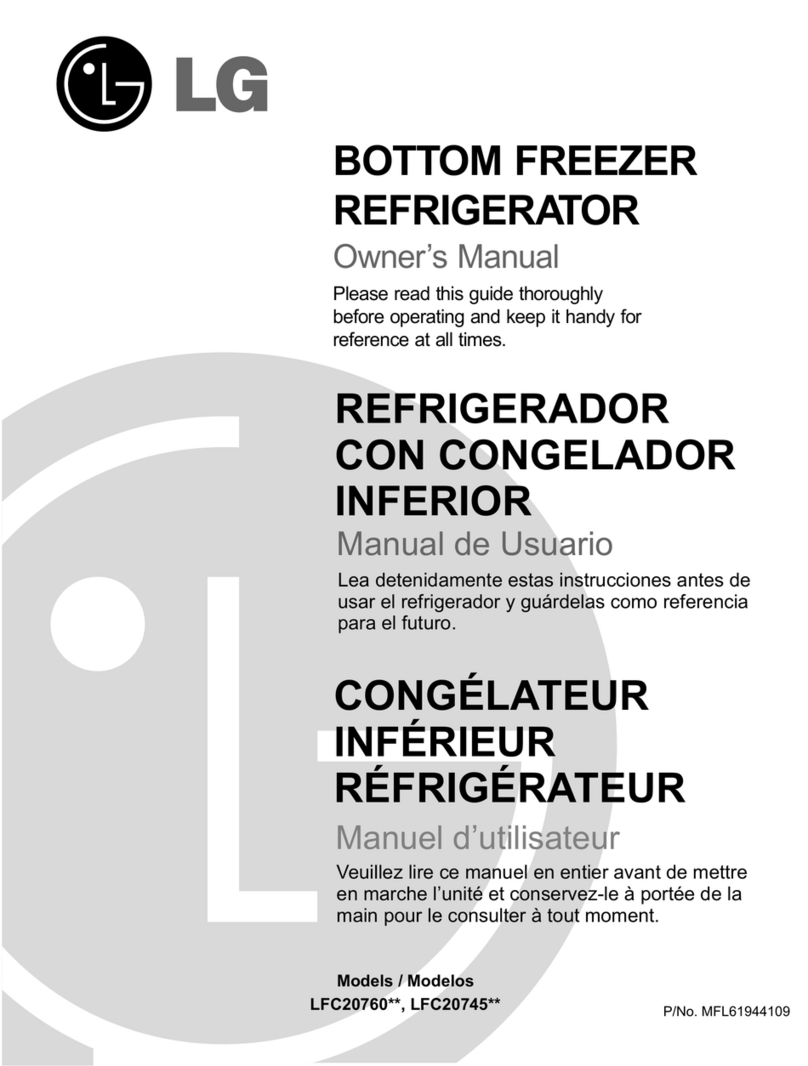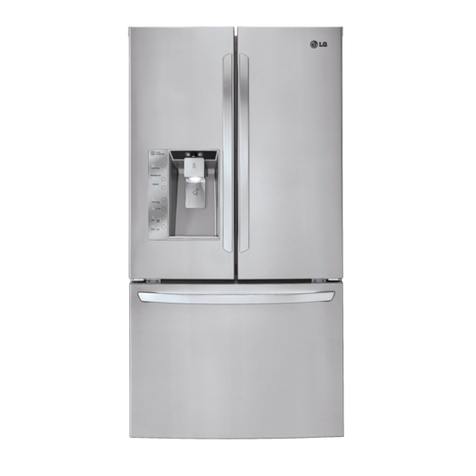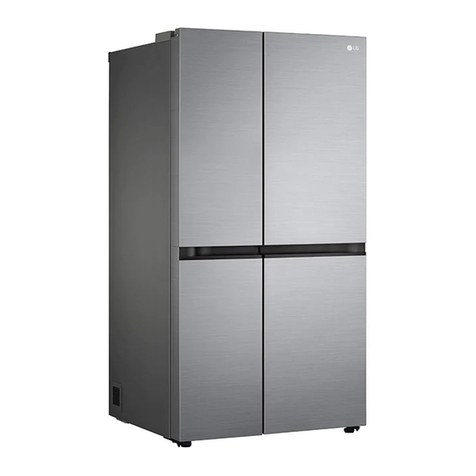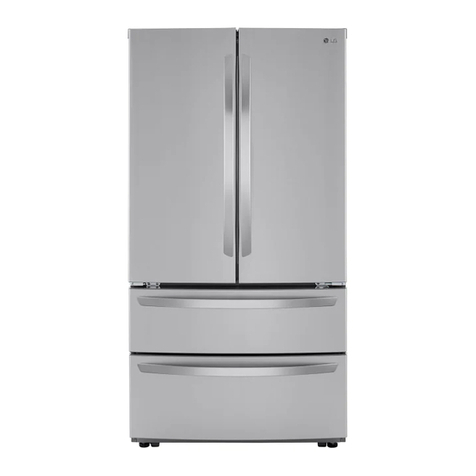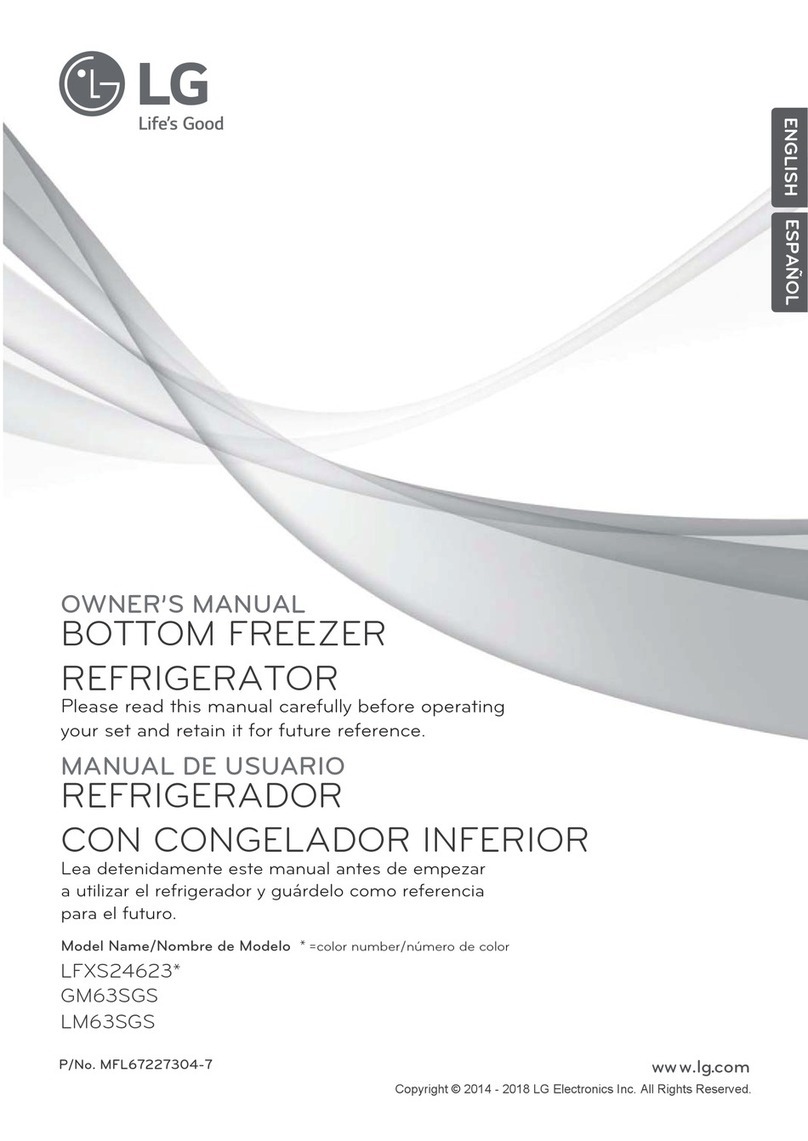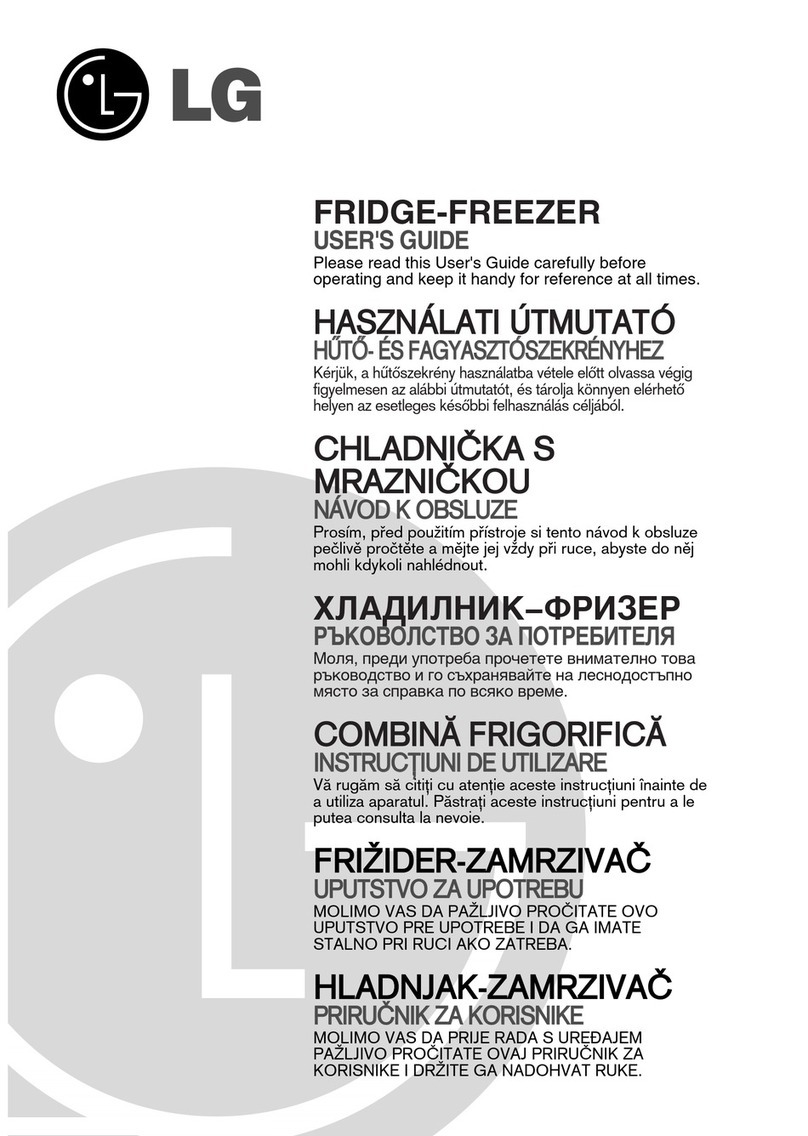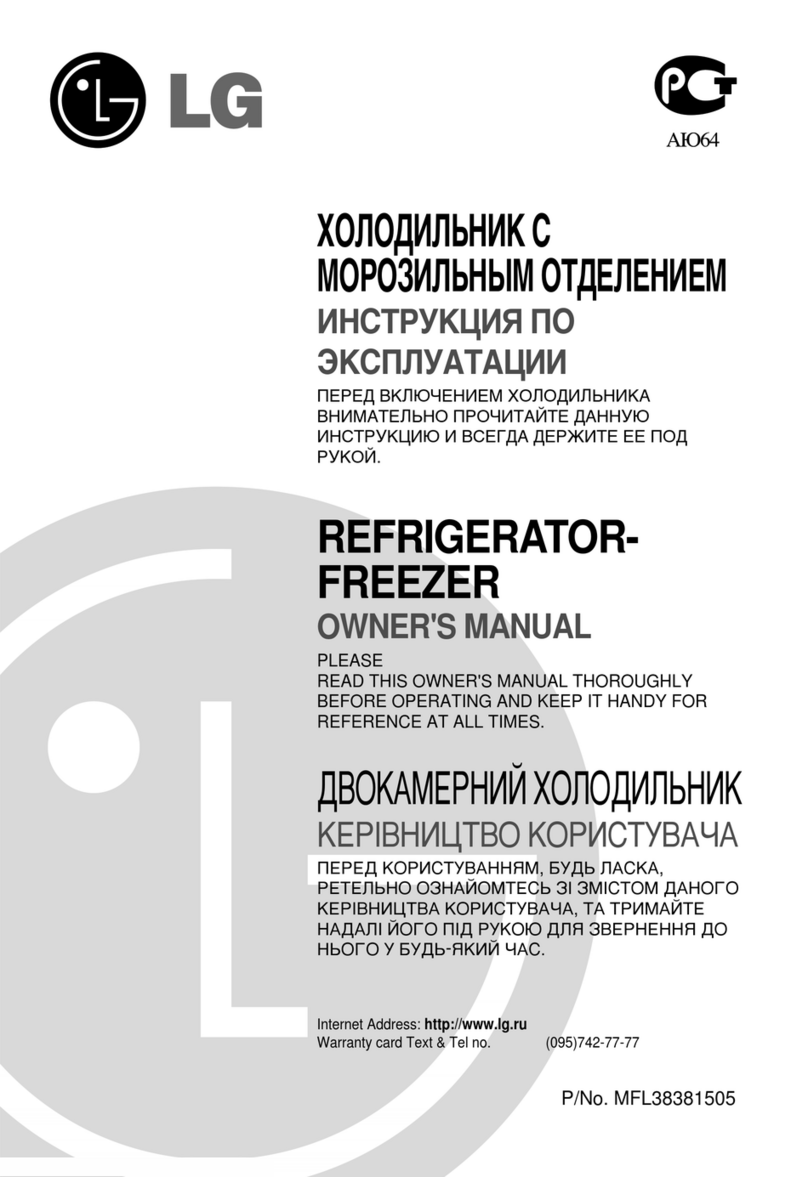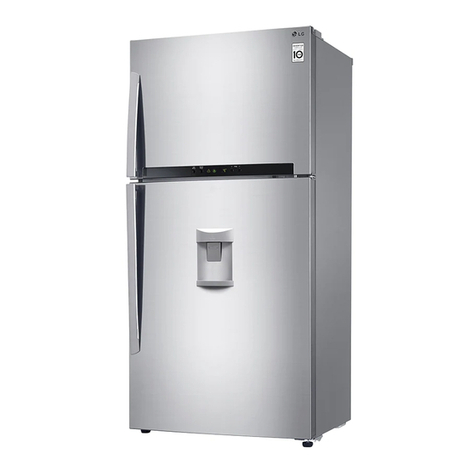CONTENTS
- 2 -
Please read the following instructions before servicing your
refrigerator.
1. Unplug the power before handling any elctrical
componets.
2. Check the rated current, voltage, and capacity.
3. Take caution not to get water near any electrical
components.
4. Use exact replacement parts.
5. Remove any objects from the top prior to tilting the
product.
SAFETY PRECAUTIONS
SAFETY PRECAUTIONS ............................................................................................................................
1. SPECIFICATIONS ...................................................................................................................................
2. PARTS IDENTIFICATION ........................................................................................................................
3. DISASSEMBLY ........................................................................................................................................
3.1 Door ....................................................................................................................................................
3.2 Door alignment ....................................................................................................................................
3.3 Fan and fan motor ...............................................................................................................................
3.4 Defrost control assembly ....................................................................................................................
3.5 Lamp .......................................................................................................................................... .........
3.6 Multi duct .............................................................................................................................................
3.7 Main PWB.............................................................................................................................................
3.8 Display PCB.........................................................................................................................................
3.9 Ice button assembly ............................................................................................................................
3.10 Funnel replacement ...........................................................................................................................
3.11 Water button assembly ......................................................................................................................
3.12 Duct door replacement.......................................................................................................................
3.13 Ice corner door replacement .............................................................................................................
3.14 Icemaker assembly ...........................................................................................................................
3.15 Auger motor cover .............................................................................................................................
3.16 How to remove a door ice bin ............................................................................................................
3.17 How to insert a door ice bin ...............................................................................................................
3.18 How to remove and reinstall the pullout drawer ................................................................................
3.19 Fan and fan motor disassembly ........................................................................................................
3.20 Pull out drawer ..................................................................................................................................
4. ADJUSTMENT .........................................................................................................................................
4.1 Compressor .........................................................................................................................................
4.2 PTC-Starter .........................................................................................................................................
4.3 OLP (Overload Protector) ....................................................................................................................
4.4 To remove the cover PTC ....................................................................................................................
5. CIRCUIT DIAGRAM .................................................................................................................................
6. TROUBLESHOOTING .............................................................................................................................
6.1 Compressor and electrical components .............................................................................................
6.2 Other electrical components ...............................................................................................................
6.3 Service diagnosis chart ......................................................................................................................
6.4 Refrigeration cycle ..............................................................................................................................
7. OPERATION PRINCIPLE AND REPAIR METHOD OF ICEMAKER ......................................................
7.1 Operation principle .............................................................................................................................
7.2 Ice maker functions ............................................................................................................................
7.3 Defect diagnosis function ...................................................................................................................
8. DESCRIPTION OF FUNCTION & CIRCUIT OF MICOM .........................................................................
8.1 Function ..............................................................................................................................................
8.2 PCB function .......................................................................................................................................
8.3 Troubleshooting .................................................................................................................................
8.4 Main PWB assembly and parts list .....................................................................................................
9. EXPLODED VIEW AND REPLACEMENT PART LIST ...........................................................................
2
3
4
5
5
7
7
8
8
9
9
9
9
9
10
10
10
10
11
12
12
13
15
15
16
16
16
17
17
18
19
19
20
21
22
24
24
25
26
27
27
33
38
40
43
